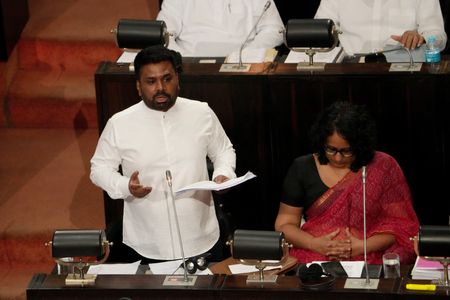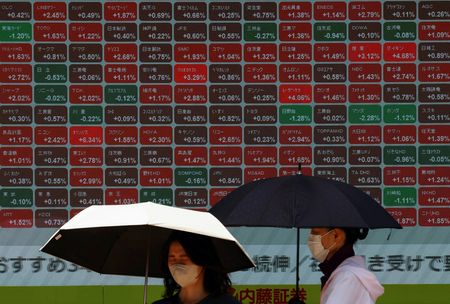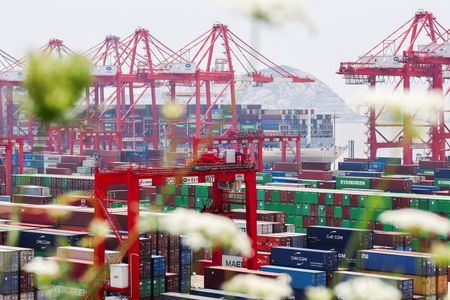By Uditha Jayasinghe
COLOMBO (Reuters) -Sri Lanka has nearly completed its debt restructuring process and is set to regain the economic output it lost to the 2022 financial crisis, President Anura Kumara Dissanayake said on Friday as he presented the budget for 2026.
Dissanayake, who is also the finance minister of the Indian Ocean island nation, told lawmakers that Sri Lanka’s economy was now stable and it had regained the confidence of investors.
“For a long time, Sri Lanka was under severe debt,” Dissanayake said. “But debt to GDP, which was earlier at around 114%, will reduce to 96% of GDP this year and our target is to reduce it further to 87% by 2030.”
“By the end of this year, Sri Lanka will regain the economic output lost from the crisis,” he said, adding that the country would aim for 7% growth in the medium term.
BUDGET TARGETS FISCAL CONSOLIDATION
The country will aim for a primary surplus of 2.5% of GDP, a total government revenue goal of 15.4% of GDP, and a deficit of 5.1% of GDP for 2026 to align with a $2.9 billion International Monetary Fund (IMF) program.
“Overall, the budget seems to be continuation of the government staying on the broad path of fiscal consolidation, while also balancing the incentives to ignite broad-based economic growth,” said Anjali Hewapathage, Deputy Head of Macroeconomic Research, Frontier Research.
“Our take is that this budget locks in Sri Lanka’s growth recovery pathway for 2026.”
Dissanayake swept to power late last year on a pledge to end corruption and stabilise the economy after a record dollar shortage triggered a financial meltdown in 2022.
Sri Lanka is drafting tax laws to attract foreign investment and protect investors, an essential component of the reforms for securing the sixth IMF tranche of $347 million by year-end.
The World Bank projects growth at 4.6% in 2025 and 3.5% in 2026.
(Reporting by Uditha Jayasinghe; Editing by YP Rajesh, Aidan Lewis)











